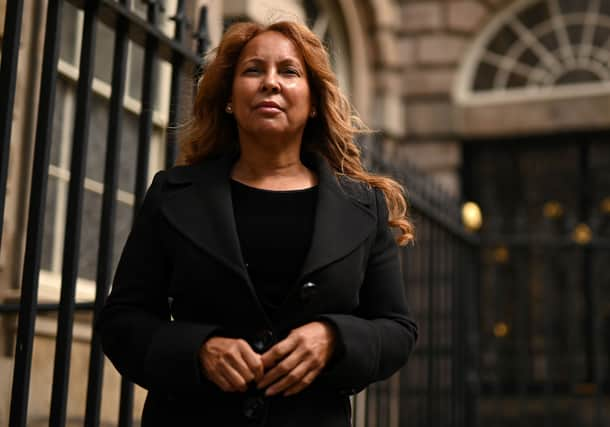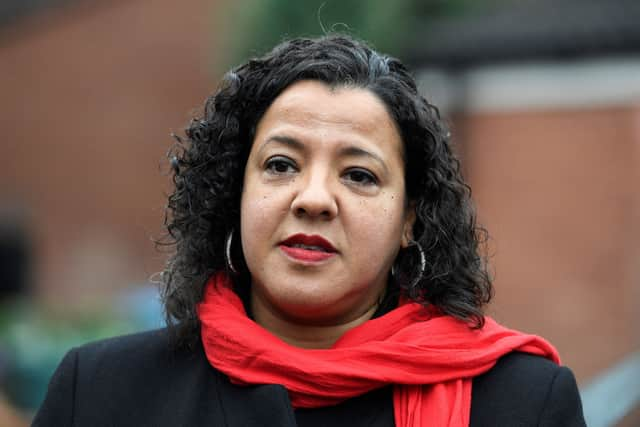Liverpool one of just 15 areas in England where male councillors do not outnumber female


Half of Liverpool’s councillors were female in 2021 – making it one of only 15 areas in England where male councillors do not outnumber female.
Ahead of International Women’s Day, equality campaigners are urging women to stand for election to ensure they are no longer outnumbered in council chamber’s across the country.
Advertisement
Hide AdAdvertisement
Hide AdLast year, women made up just over a third of the councillors elected to local authorities across England, according to research by the Fawcett Society and Democracy Club.
But at Liverpool City Council, 45 of 90 councillors in 2021 were female – at 50%, a larger proportion than was recorded five years ago, when 42 councillors were women.
But it is not a ratio that is yet repeated across the Liverpool City Region.
Female Councillors in the Liverpool City Region
- Wirral Borough Council had the lowest proportion of female councillors at 38%. Twenty-five of 65 councillors in 2021 were female – a larger proportion than was recorded five years ago, when 22 of 66 councillors were women.
- St Helens Borough Council was the second best in the region as 23 of 48 councillors in 2021 were female – at 48%, a larger proportion than was recorded five years ago, when 17 councillors were women.
- At Sefton Borough Council, 31 of 66 councillors in 2021 were female – at 47%, a larger amount than was recorded five years ago, when 24 councillors were women.
- At Knowsley Borough Council, 20 of 45 councillors in 2021 were female – at 44%, the same proportion as five years ago.
- At Halton Borough Council, 22 of 54 councillors in 2021 were female – at 41%, a larger ratio than was recorded five years ago, when 19 of 56 councillors were women.


Campaign for change
Frances Scott, founder of the 50:50 Parliament campaign group, said women have been consistently outnumbered in political systems nationally and called for more to be done to boost the number of female politicians and ensure their voices are heard.
Advertisement
Hide AdAdvertisement
Hide AdShe said: “Women’s experiences of local transport, of education, of juggling a career and parenting, of violence, of healthcare and maternity services are simply not properly represented and society is losing out.
“We need to support women to stand for elected office so that our local governments and Parliament can draw upon the widest possible pool of talent and the 32 million women who live and work in the UK can have an equal share of voice.”
Female councillor numbers on the rise
The number of female councillors across England has grown in recent years, with 6,021 now in council chambers, up from 5,802 in 2017. That means 35% of council seats nationally are held by women, up from 33% five years ago.
But Jemima Olchawski, chief executive of the Fawcett Society, described the pace of change in local government as “glacial”.
Advertisement
Hide AdAdvertisement
Hide AdShe said: “The 2021 local elections saw a lot of new councillors elected but we saw more of the same.
“Almost all councils continue to be dominated by men.
“It’s not good enough – we need to see our political parties setting out, and committing to, action plans which will improve diversity and improve society for us all.”
In an effort to improve female representation, the Fawcett Society has called for the continuation of remote council meetings and the implementation of maternity policies at all councils.
Diversity and inclusion
The Local Government Association, which represents councils, has echoed those calls and is working with local authorities to increase diversity and inclusion.
Advertisement
Hide AdAdvertisement
Hide AdCllr Marianne Overton, vice chair of the LGA, said: “We know that many prospective councillors are put off standing because of their already busy lives.
“We want to see more women, parents and carers stand for election and encourage them to step up to leadership roles in local government, while still being able to live their lives outside of the council chamber.
“Councils want to create a working environment which is attractive and supportive for people from all groups and backgrounds, to help further improve representation locally while producing the next generation of civic leaders.”
The Government is expected to respond soon to the findings of a call for evidence conducted in response to calls from councils to retain remote or hybrid meetings post-pandemic.
Advertisement
Hide AdAdvertisement
Hide AdA spokeswoman from the Department of Levelling Up, Housing and Communities said the Government recognised the importance of gender equality and urged councils to do more to attract a diverse range of candidates.
Comment Guidelines
National World encourages reader discussion on our stories. User feedback, insights and back-and-forth exchanges add a rich layer of context to reporting. Please review our Community Guidelines before commenting.